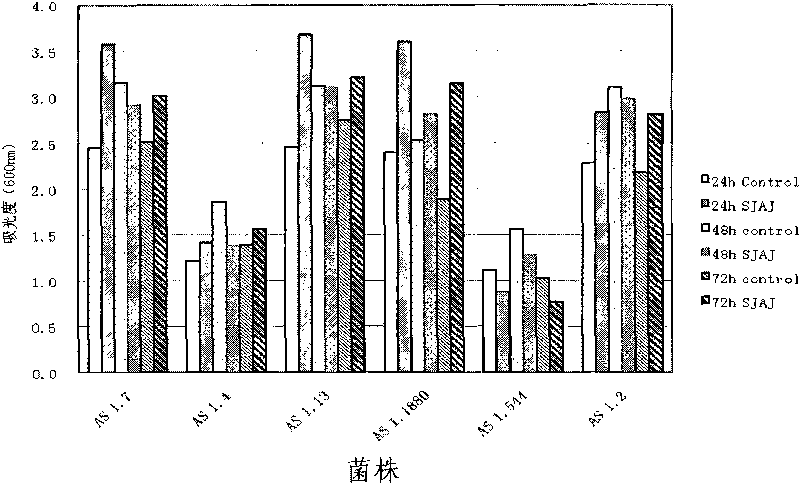Method for producing mannitol by taking jerusalem artichoke as raw materials through biotransformation
A technology of biotransformation and microbial transformation, which is applied in the field of microbial transformation to produce mannitol, can solve the problems of low corn per capita and limited arable land, and achieve the effect of facilitating large-scale production, low production cost, and improving the taste of lactic acid
- Summary
- Abstract
- Description
- Claims
- Application Information
AI Technical Summary
Problems solved by technology
Method used
Image
Examples
Embodiment 1
[0019] The preparation of embodiment 1 saccharified Jerusalem artichoke juice
[0020] 1) Processing technology of Jerusalem artichoke tubers: dry the Jerusalem artichoke tubers in the sun, pulverize them into coarse powder (5-10 mesh) by a grinder, dry them in an oven at 60°C, and seal them for later use.
[0021] 2) Immerse the prepared Jerusalem artichoke meal in 50°C water to make a solution with a mass concentration of 10%, adjust its pH value to 6.5 by 1M NaOH and 1M HCl, and prepare the Jerusalem artichoke meal by adding 50000U of inulinase per liter The enzymatic hydrolysis reaction solution (inulinase enzyme activity is defined as the amount of enzyme needed to hydrolyze the substrate to produce 1 micromole of fructose per minute) was saccharified with stirring in a 50°C water bath for 6 hours.
[0022] 3) Filter the reaction solution after enzymatic hydrolysis with gauze, and centrifuge the supernatant. Then 42 DEG C rotary evaporation concentrated to 1 / 3 of the vol...
Embodiment 2
[0024] The difference from Example 1 is that
[0025] 2) Immerse the prepared Jerusalem artichoke meal in 60°C water to make a solution with a mass concentration of 20%, adjust its pH value to 6.5 by 1M NaOH and 1M HCl, and prepare the Jerusalem artichoke meal by adding 100000U of inulinase per liter The enzymatic hydrolysis reaction solution (inulinase enzyme activity is defined as the amount of enzyme needed to hydrolyze the substrate to produce 1 micromole of fructose per minute) was saccharified with stirring in a 60°C water bath for 6 hours.
[0026] 3) Filter the reaction solution after enzymatic hydrolysis with gauze, and centrifuge the supernatant. Then 42 DEG C rotary evaporation concentrated to 1 / 4 of the volume of the original supernatant to make concentrated saccharified Jerusalem artichoke juice, which was detected by HPLC after dilution to determine that the total sugar concentration was 150g / L (glucose / fructose=4:1).
PUM
 Login to View More
Login to View More Abstract
Description
Claims
Application Information
 Login to View More
Login to View More - R&D
- Intellectual Property
- Life Sciences
- Materials
- Tech Scout
- Unparalleled Data Quality
- Higher Quality Content
- 60% Fewer Hallucinations
Browse by: Latest US Patents, China's latest patents, Technical Efficacy Thesaurus, Application Domain, Technology Topic, Popular Technical Reports.
© 2025 PatSnap. All rights reserved.Legal|Privacy policy|Modern Slavery Act Transparency Statement|Sitemap|About US| Contact US: help@patsnap.com



